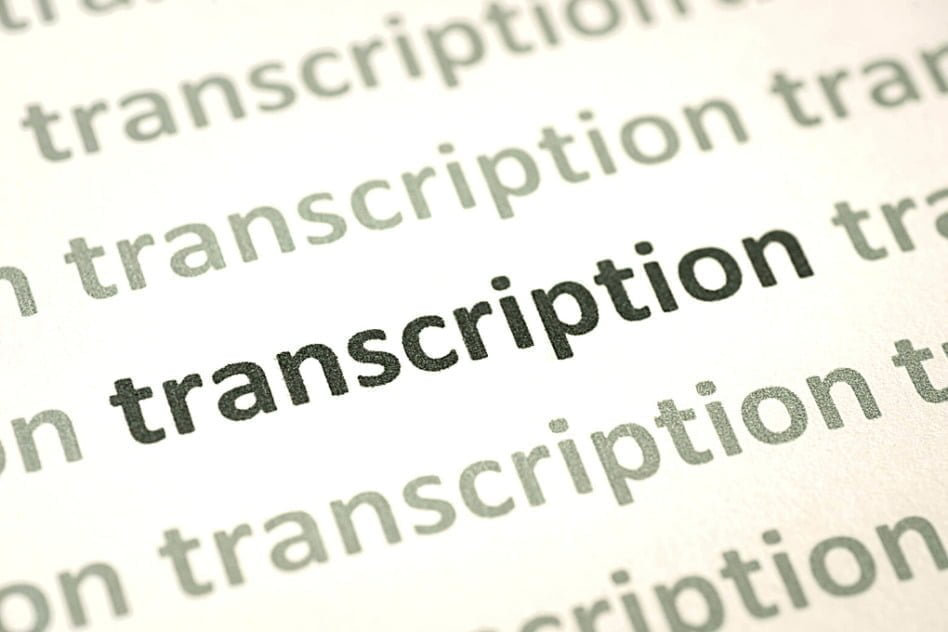Audio and video recording are incredibly effective technologies for capturing and conveying information. But in order in order to retrieve content for deeper understanding or analysis, audio and video recordings must be replayed. The fact is, there are situations when you need an accurate written record of the words spoken, and such records are essential to many multilingual projects.
There are several levels of audio/video transcription for you to choose from. The most detailed transcribes every word and sound that occurred within an event or recording, while the simplest level condenses audio content to a third-person summary. Let’s look at your options and when each might be best for your needs.
Verbatim – The verbatim transcript will include every word and sound related to the conversation or event. This includes coughing, laughter, or the sound of someone entering the room. Punctuation and visual tags are important to the transcription of all of the audio elements; for example, the use of ellipses and dashes to indicate pauses of varying lengths must be used and be consistent. Unrelated sounds such as sirens outside the building are not included. The intention with verbatim transcription is to capture not only the information conveyed, but also tone, emotions, and interruptions.
Common uses: Legal and court proceedings
Psychological interviews
Transcripts for use in the creation of subtitles
Academic research
Market research, qualitative
Example: “There were times when … {fighting back tears} most of the time I – I could not get anyone at the company to listen to me. That’s why I had to … {takes a deep breath} I was forced to quit.”
Intelligent – The level of detail retained in this level of transcription results in text that is still quite literal, but tags are usually eliminated so that the dialog speaks for itself.
Common uses: Business transactions
Legal discussions
Job interviews
Oral history interviews
Example: “There were times when … most of the time I – I could not get anyone at the company to listen to me. That’s why I had to … I was forced to quit.”
Edited – These transcripts are trimmed to a highly readable text that still represents the complete range of thoughts that the audio recording contains. Redundancies are eliminated, but otherwise wording remains the same, but slightly condensed.
Common uses: Podcast content
Journalistic interviews
General business meetings
Example: “There were times when … most of the time I could not get anyone at the company to listen to me. That’s why I had to… I was forced to quit.”
Summarized – When only the basic meaning of an audio recording is needed, a transcript that summarizes the spoken words is the best choice.
Common uses: Interviews for content only
Market research, quantitative
Information for news articles
Conference/seminar records
Example: “Most of the time I could not get anyone at the company to listen to me. I was forced to quit.”
Paraphrased – Third-person narration of the audio content to record core data is useful when the central idea of the information is a small part of a larger document.
Common uses: Correspondence about an event
Board meeting minutes
Doctor’s notes
Research, some types
Example: She said that no one at the company would listen, so she was forced to quit.
Based on your future use of the transcribed audio/visual material, you will also want to decide in what form you want to receive your data. For all formats, the most accurate method to transcribe and translate is to, 1) transcribe the original language accurately, and then 2) enlist a translator to translate that text to the target language. The resulting text will be delivered in one of the following formats.
Monolingual – if you only need the original text transcribed.
Interpretive – if you want to receive only the target language transcription.
Double-column – if you wish to keep a record of the original language text alongside the translated text.
Transcription is often the foundational step in a larger project. A “verbatim” transcript, for instance, may be used to create subtitles for a film. The transcripts and translations of witness testimonies are used to develop entire strategies in criminal and civil legal cases. Market research transcripts become invaluable data on which global marketing campaigns are based. The need for accuracy in transcription is obvious in all of these cases.
A Language Service Provider with a full range of advanced transcription and translation tools is important. But just as important is the experience of specialized human translators for every field your audio and video content involves. Efficient accuracy in the two-phase process of transcription and translation depends on deep understanding of your field and the relevant terminology. Skrivanek offers one-contact full service for the complete range of audio/video transcription/translation projects, with 200 language combinations and nearly 100 areas of specialization.
J. V. McShulskis
